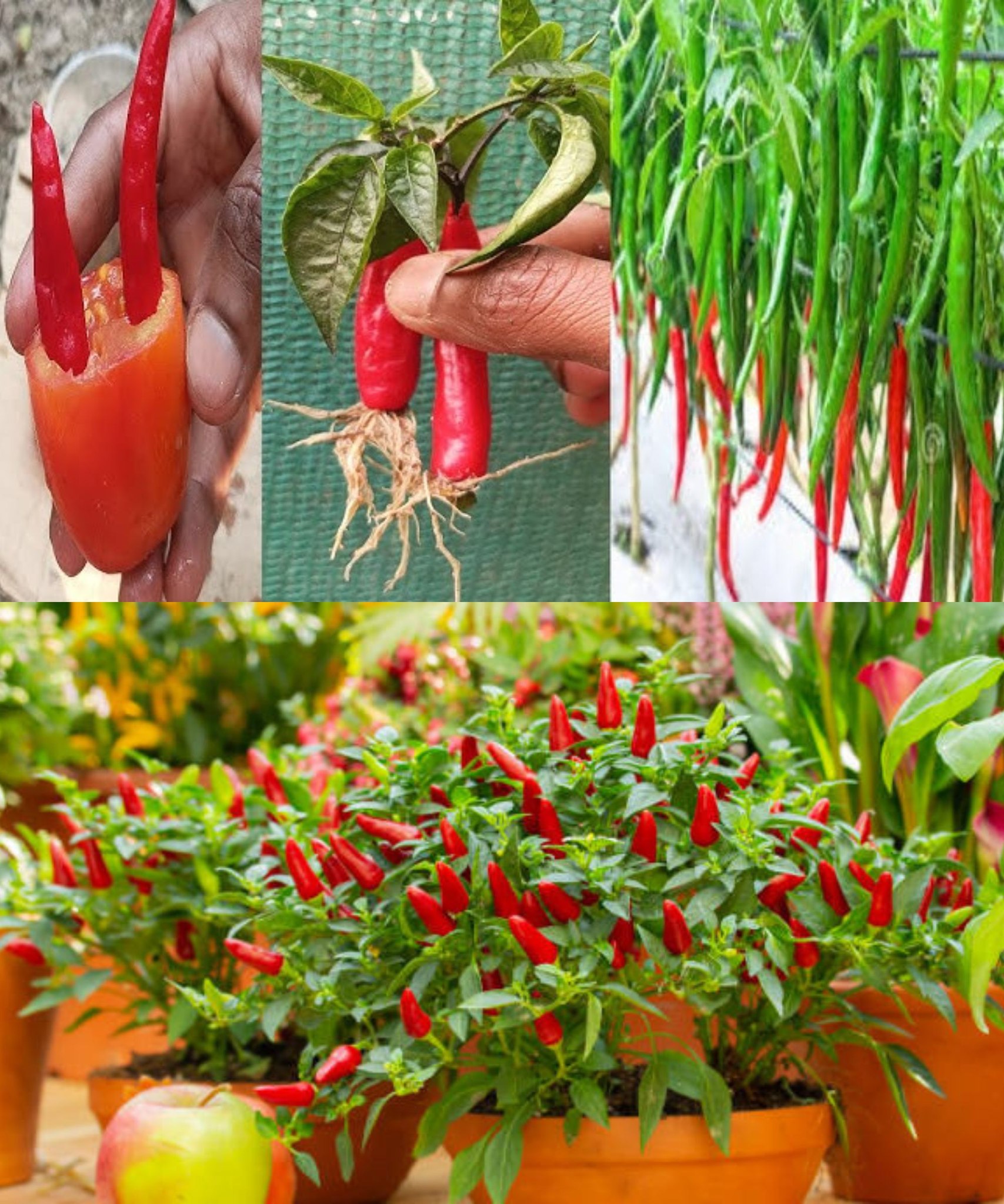
Growing chili peppers from seed can be an exciting venture given the vast array of shapes and varieties at your disposal, but it’s not uncommon to encounter challenges when trying to nurture seedlings into robust plants. You might find yourself wondering, “Why aren’t my peppers growing?” and feel the urge to discard them into the compost heap.
Having spent several years starting chili peppers indoors, I’ve honed the techniques to circumvent the most common issues encountered when cultivating these spicy plants, aiming for the desired outcome: bushy lateral growth, sturdy stems, and a robust structure.
One key point to remember is that pepper seeds can be slow to sprout. Set your expectations to see the first signs of life no sooner than two weeks post-planting.
Below, uncover five essential tips for successfully growing chili peppers from seeds.
1. Sow two pepper plants per pot
Peppers can thrive individually, yet they tend to yield more when planted in pairs. Initially, I sowed the pepper seeds in separate pots and later combined them into larger pots when it was time to upsize.
This method doesn’t hinder stem development, and the plants generally grow to be quite healthy. Cultivating chili peppers from seeds is certainly achievable, and even those new to gardening can enjoy an abundant pepper harvest in their vegetable garden by starting with high-quality seeds and soil.
2. Start chili peppers from seed indoors 8 to 10 weeks before the last frost date.
The optimal time to begin sowing chili pepper seeds is about 8 to 10 weeks prior to the last expected frost date in your area. This allows the seedlings to be ready for acclimatization, known as hardening off, in the week following the last frost. After this process, you can plant them in the ground the subsequent week.
Given that chili peppers require a lengthier growing season, if you’re gardening in a region with relatively brief periods of warmth, it’s crucial to adhere to this timeline. Typically, this means starting your seeds indoors around mid-February to early March, hardening off the plants around mid-May, and then transferring them to your garden in late May or possibly early June.
While the plants will grow to a considerable size and will need ongoing care, starting them within this timeframe ensures that you can enjoy a continuous harvest of peppers throughout the growing season, rather than just a single pepper towards the end of summer.
3. Maintain Good Grow Light (or Use a South-Facing Window)
Nobody likes seedlings with long, thin stems! (Seedlings with long thin stems are when your plants are stretched out because they are trying to reach the light source). You can avoid this fate for your plants by keeping a grow light just 2 to 5 cm away.
If you grow your peppers on a south-facing window, you won’t have to move the light but you will need to move the plant. Reposition your pepper plants every few days so they don’t lean to one side. You’ll probably turn them every day after they first germinate, then every few days once they get a little more established.

4. Pinch (cut) the chili peppers at the 8 to 10 leaf stage
If you’re aiming for robust stems and abundant lateral growth, then pruning your pepper plants is essential! Once your plant has developed 8 to 10 leaves, trim away the top 2 to 4 leaves.
It might be tough, feeling almost like you’re harming your plant with such pruning. However, rest assured that this practice will lead to a pepper plant with sturdy stems, a fuller shape, and a generous yield of fruit!
5. Plant in the right place in the vegetable garden
After successfully cultivating your ideal chili plant from seed, there’s still more to do! Chili peppers generally don’t reach great heights and they crave plenty of sunshine and warmth. Position them in a part of your garden or in a container that basks in at least 6 hours of sunlight daily, situated in the warmest spot you can find. (This advice may vary if you’re in an exceptionally hot climate.)
Should you have the advantage of a greenhouse or polytunnel, utilizing this resource can significantly enhance your pepper-growing endeavors. The additional warmth inside such structures greatly benefits the peppers, increasing the likelihood of producing larger fruits.
What are your own tips and tricks for growing chili peppers? Share your insights and experiences to help others in their pepper-planting pursuits!
